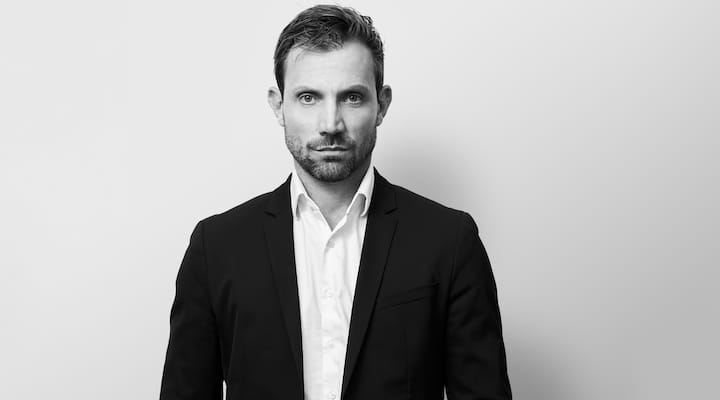- ClickZ
- Posts
- Sell What Made You Famous — And Prove It Moves the Needle
Sell What Made You Famous — And Prove It Moves the Needle
Why Calvin Klein’s return to product clarity demands smarter measurement
Calvin Klein, once the epitome of aspirational American fashion, is entering a new era. Under PVH Corp’s “PVH+” plan, the brand has shifted away from runway spectacles and celebrity hype toward selling core hero products, underwear, denim, and athleisure: that people actually buy and wear.
PVH’s year-end review credits Calvin Klein’s growth to “strong hero product, powerful consumer engagement, and elevation of the consumer experience.” In plain terms: sell what made you famous. And make every dollar work harder doing it.
Hero Products, Not High Fashion
That shift is evident in CK’s latest campaigns. Rather than launching overpriced designer drops, Calvin Klein’s marketing now spotlights its staple lines. For Spring 2024, the brand ran a campaign with The Bear star Jeremy Allen White, reinforcing its signature underwear and jeans with his face on billboards and in ads. PVH CEO Stefan Larsson boasts that Calvin “is driving some of the highest consumer engagement in the history of the brand, fueled by cut-through campaigns with globally relevant mega-talent”.
And the Spring 2025 campaign features pop superstar Bad Bunny modeling CK’s revamped Icon Cotton Stretch underwear collection. In each case, the emphasis is on the product: CK’s new “Icon Cotton Stretch” line claims to be a “modern evolution of the brand’s iconic designer underwear”.
These choices send a clear message: Calvin Klein is playing to its strengths. In other words, sell what made you famous – sexy, comfortable basics. This contrasts with most of its recent history; CK hasn’t staged a big fashion show since 2018, instead letting product and lifestyle marketing carry the brand. (Even now, CK will return to New York Fashion Week under new creative director Veronica Leoni, but that move feels like icing on a cake of commerce, not the main focus.) The intent is to create “iconic products” with broad appeal.
A Commerce-First Mindset
Behind the scenes, PVH is reengineering how Calvin Klein goes to market. CEO Stefan Larsson has emphasized digital shopping as a growth engine. Recent earnings calls highlighted double-digit demand growth in online sales. And Calvin Klein is trimming back low-performing marketplaces to focus on owned platforms and premium wholesale partners.
The brand is also getting operationally leaner. New rollouts like RFID tagging are designed to improve inventory flow across retail and e-commerce.
 David Savman | And the culture shift runs deep. CK’s leadership team—including newly appointed global president David Savman—is building a “product-centric organization” that align brand messaging with consumer data. |
What Marketers Now Face
This shift brings new pressure. If Calvin Klein is moving to a more focused, mass-market strategy, then brand and performance teams must speak the same language: revenue.
That’s where most fashion marketers fall short. For every viral moment or influencer post, there’s a budget line asking: did it drive sales? Teams often struggle to demonstrate the link between brand spend and business results, so when budgets are tightened, brand spend tends to be the first to get cut because its contribution to the bottom line isn’t always clear. This is where full-funnel measurement is key—brands need to be able to quantify the impact of brand spend on business outcomes.
Fast Fashion Lessons, Smarter Strategies
Look at Uniqlo: its success comes from consistency, not hype. The Japanese retailer sells basic essentials in high volume, keeping operations simple and margins healthy. H&M, for all its churn, is similarly built for repeat business. Both brands treat marketing as a performance function.
Calvin Klein can’t adopt those models wholesale, but it can adopt their clarity. That means focusing on product-first marketing, tracking every campaign’s impact, and moving budget to what works.
That’s where measurement tools come in. Fospha, for example, helps consumer brands move beyond last-click or siloed dashboards. Its cross-channel measurement system gives a clear view of what’s driving profitable growth, from digital to in-store, from brand to performance.
For a brand like CK, which operates across TikTok, Amazon, DTC and department stores, that’s vital. Measurement is the engine of better decisions. Fospha’s approach offers exactly what Calvin’s teams need: a single system of truth across fragmented data.
What Needs to Change Internally
For marketing to lead this transformation, Calvin Klein’s internal setup must evolve. That starts with breaking down walls between brand and performance teams. The company’s new CMO was brought on to “marry commercial and aspirational elements” for a reason.
Budgets can’t be allocated based on gut. Marketing leaders must demand regular measurement cycles that include every major channel, and feed that data back into planning.
The stakes are clear. PVH expects Calvin Klein’s sales to stabilize in 2025 after a tough year. But flat growth isn’t enough if costs are rising. Every campaign must justify its spend.
The good news is, the groundwork is there: strong product lines, iconic brand DNA, and new leadership aligned around digital metrics. Now it’s up to the marketers to harness that with smarter measurement.
Reply